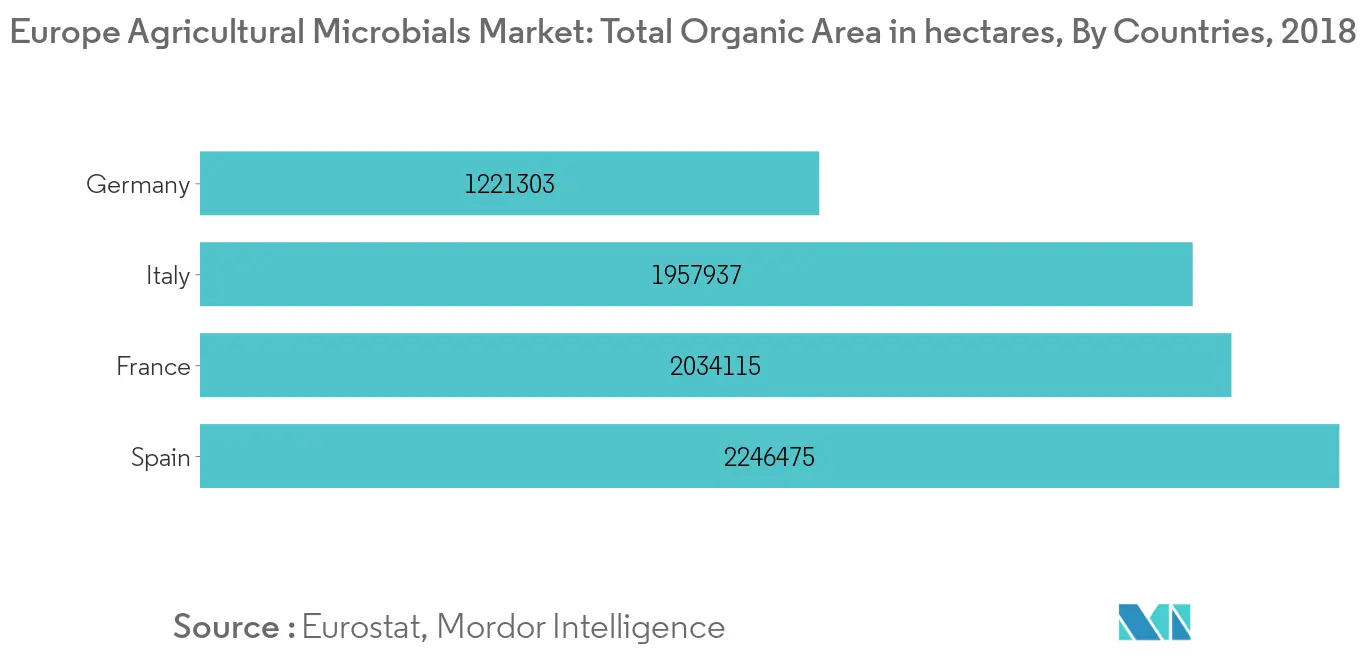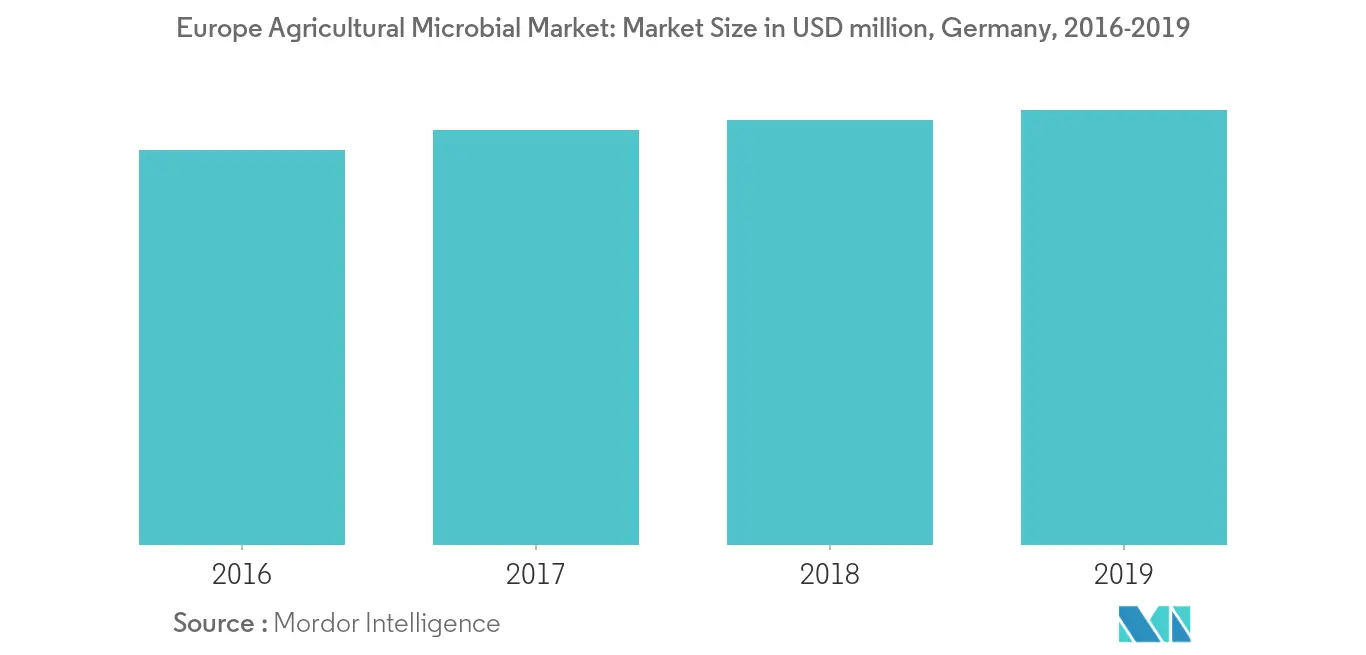Market Trends of Europe Agricultural Microbials Industry
This section covers the major market trends shaping the Europe Agricultural Microbial Market according to our research experts:
Popularity of Organic Farming in the Region
According to Eurostat, the total organic area in the European Union was 13.4 million hectares in 2018 and is still expected to grow in the coming years. The increase in the organic cultivation area between 2012 and 2018 was 34 %, which shows remarkable growth. The total organic area considered here is the sum of the 'area under conversion' and the 'certified area'. Before an area can be certified as 'organic', it must undergo a conversion process, which may take 2-3 years depending on the crop. Between 2012 and 2018, Bulgaria, Croatia, and Ireland recorded growth in the total organic area of over 100 %. However, two EU Member States reported reductions in the organic area, for example, the United Kingdom by 22.5 % and Poland by 26.1 %. As conventional synthetic options become ineffective due to pests developing resistance, growers are more and more willing to try biological options. Microbial pesticides can be very effective even in very small quantities and are quick to decompose, which causes lower exposure levels and prevents pollution-associated problems of traditional pesticides. Consumers have become more aware of the products they consume and scrutinize the safety and quality of food products. So, when farmers use microbial pesticides in agricultural land, it lessens the chance of toxicity that comes figuratively from synthetic pesticide usages. The overall increase in area under organic farming is enhancing the market for agricultural microbial in the country.

Germany is the Fastest Growing Market
Germany holds the largest share in the European agricultural microbial market and is expected to be the fastest-growing market during the forecast period. According to our analysis, by type, virus-based microbial holds the largest share of 49.6% in the country and a market value of USD 86.4 million in 2017. Farmers in Germany are getting interested in preserving the resource of soil in the long term and thus is making an important contribution to sustainable agriculture. Also, the way no-till affects soil life is of great importance as soil microorganisms are significantly responsible for functioning material cycles and soil fertility. According to BÖLW (Organic Food Production Alliance), there are about 30,000 organic farms in the country as of 2019. This is roughly one-tenth of all agricultural enterprises. To achieve the government target, a further 30,000 to 40,000 farmers would have to change over to organic farming. The rising popularity of organic farming in the country will stimulate the demand for agricultural microbial, which in turn is likely to boost the market.


